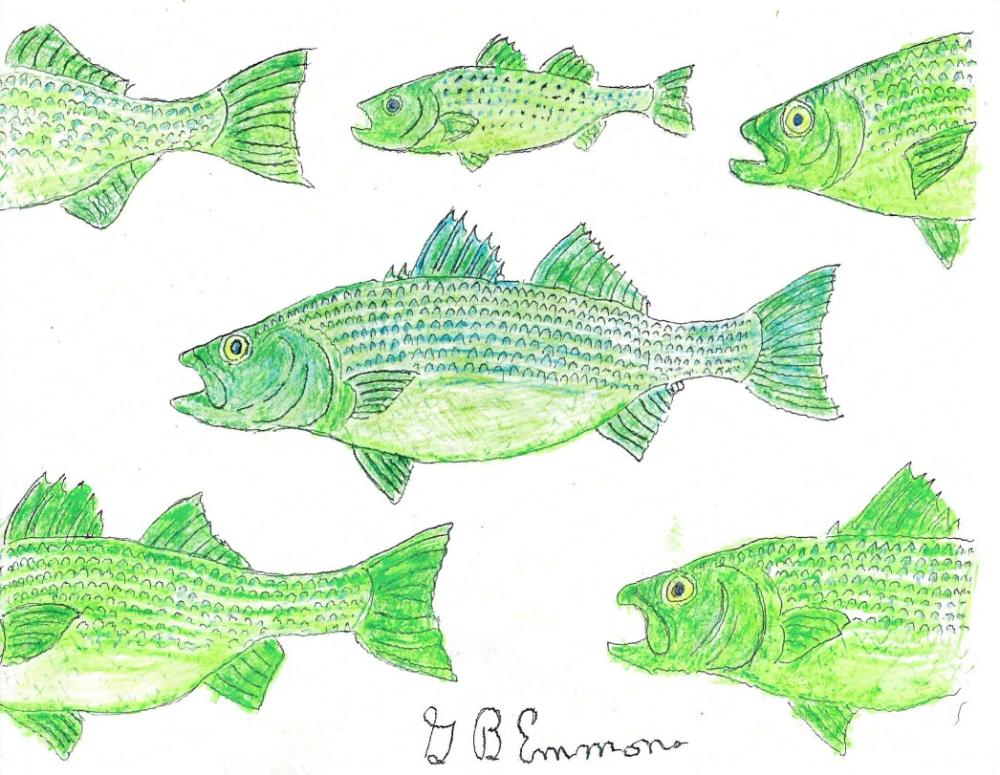Striped Bass begin northern migration
Striped Bass are native to Marion and Mattapoisett waters and have played an important role in the fishing industry along the South Coast. Fairhaven resident George Emmons writes about the Striped Bass migration as they travel north through Buzzards Bay.
The bodies of Striped Bass, as in my illustration, have stout features of seven to eight continuous horizontal stripes for which they are named. They are mostly colored a light olive green with steel blue on top as well as white or iridescent undersides.
They often have a long life of up to 30 years, growing to five feet in length and weighing up to 77 pounds. Both male and females are sexually mature at eight years old. They have very few predators except for sharks, seals and human fishermen.
For centuries they have supported both recreational and commercial fisheries on the Atlantic coast. In all 16 marked out areas the commercial operation systems include gill nets, haul up into boat seins, trawling, and hand held lines. Last year, the recreational harvest of Striped Bass was estimated at 1.71 million. The latest regulations limit only one 28-inch fish per person. This sharply difficult criteria has increased the Atlantic population dramatically.
Striped Bass must now continue their northern journey into the entrance of the Cape Cod canal by schooling up into marching legions to fit through the narrow passage. Meanwhile, large numbers of anglers with spinning rods can cast all the way across either side of the canal with artificial or live bait.
At the other end of the canal the Striped Bass can return to wider waters. We wish them well to complete their final challenge under the catch and release conditions that will bring them back again next year.














